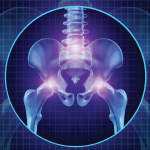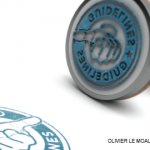Dr. Buchbinder: I think we all need to have clinical epidemiology skills so we can decipher the evidence for ourselves. When I trained in Canada, an introduction to clinical epidemiology course was offered to all fellows starting training in their various specialties; I think that such courses should be mandatory for all trainees because it is a fundamental, core subject area. We should all think critically about what items in our own practices may constitute low-value care. For example, think of the clinician-led Choosing Wisely campaign that encourages us to identify five things in our scope of practice that we should stop doing.16 When in the clinic with our patients, we should be asking ourselves the same questions that patients should be asking of us when we recommend a test, treatment or procedure. These include:
- What are the benefits?
- What are the harms?
- What would happen if I did nothing or waited?
- What are the alternatives?
- What does the evidence say?
- What are my outcomes?
Only by asking these questions each and every day can we improve the care that we provide to patients.
Jason Liebowitz, MD, is an assistant professor of medicine in the Division of Rheumatology, Columbia University Vagelos College of Physicians and Surgeons, New York.
References
- Braithwaite J, Glasziou P, Westbrook J. The three numbers you need to know about healthcare: The 60-30-10 challenge. BMC Med. 2020;18(1):102.
- Buchbinder R, Osborne RH, Ebeling PR, et al. A randomized trial of vertebroplasty for painful osteoporotic vertebral fractures. New Engl J Med. 2009 Aug 6;361(6);557–568.
- Buchbinder R, Ptasznik R, Gordon J, et al. Ultrasound-guided extracorporeal shock wave therapy for plantar fasciitis: A randomized controlled trial. JAMA. 2002 Sep 18;288(11):1364–1372.
- Staples M, Forbes A, Ptasznik R, et al. A randomized controlled trial of extracorporeal shock wave therapy for lateral epicondylitis (tennis elbow). J Rheumatol. 2008 Oct;35(10):2038–2046.
- Karjalainen TV, Jain NB, Page CM, et al. Subacromial decompression surgery for rotator cuff disease. Cochrane Database Syst Rev. 2019 Jan 17;1(1):CD005619.
- Wang L, Hong PJ, May C, et al. Medical cannabis or cannabinoids for chronic non-cancer and cancer related pain: A systematic review and meta-analysis of randomised clinical trials. BMJ. 2021 Sep 8;374:n1034.
- Bell K, Doust J, Sanders S, et al. A novel methodological framework was described for detecting and quantifying overdiagnosis. J Clin Epidemiol. 2022 Aug:148:146–159.
- Sanders S, Barratt A, Buchbinder R, et al. Evidence for overdiagnosis in noncancer conditions was assessed: A metaepidemiological study using the ‘fair umpire’ framework. J Clin Epidemiol. 2024 Jan;165:111215.
- Glasziou P, Doust, J. 1 in 6 women are diagnosed with gestational diabetes. But this diagnosis may not benefit them or their babies. The Conversation. 2023 Aug 14. https://theconversation.com/1-in-6-women-are-diagnosed-with-gestational-diabetes-but-this-diagnosis-may-not-benefit-them-or-their-babies-205919.
- Buchbinder R, Jolley D, Wyatt M. Population based intervention to change back pain beliefs and disability: Three part evaluation. BMJ. 2001 Jun 23;322(7301):1516–1520.
- Buchbinder R, Jolley D, Wyatt M. 2001 Volvo award winner in clinical studies: Effects of a media campaign on back pain beliefs and its potential influence on management of low back pain in general practice. Spine (Phila Pa 1976). 2001 Dec 1;26(23):2535–2542.
- Buchbinder R, et al. Low back pain (series). Lancet. https://www.thelancet.com/series/low-back-pain.
- Foster NE, Anema JR, Cherkin D, et al. Prevention and treatment of low back pain: Evidence, challenges, and promising directions. Lancet. 2018 Jun 9;391(10137):2368–2383.
- Buchbinder R, van Tulder M, Öberg B, et al. Low back pain: A call for action.Lancet. 2018 Jun 9;391(10137):2384–2388.
- WHO releases guidelines on chronic low back pain. World Health Organization. 2023 Dec 7. https://www.who.int/news/item/07-12-2023-who-releases-guidelines-on-chronic-low-back-pain.
- Morrisroe K, Nakayama A, Soon J, et al. EVOLVE: The Australian Rheumatology Association’s ‘top five’ list of investigations and interventions doctors and patients should question. Intern Med J. 2018 Feb;48(2):135–143.


